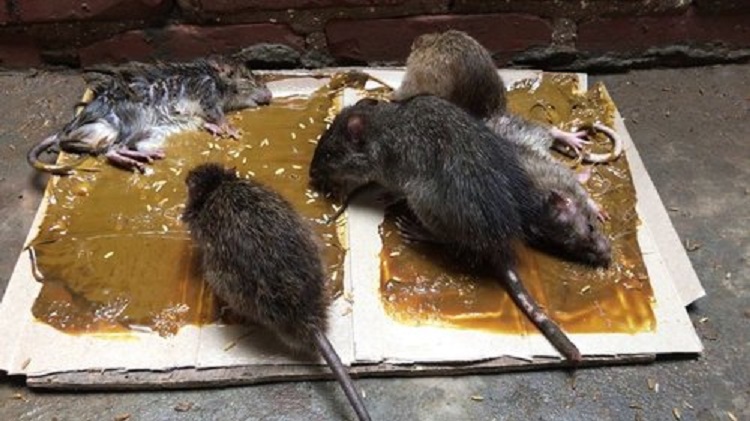A new study reveals that common methods of rat control often ignore basic animal welfare issues. Experts in pest control, animal welfare, and veterinary medicine explored the impact that different methods of rodent control have on rat welfare to better aid decision-making. Their work has just been published in the article: ‘An assessment of animal welfare impacts in wild Norway rat (Rattus norvegicus) management’.
Many millions of rats and mice are estimated to be killed globally as pests every year. Two commonly used methods are glue traps (which are designed to catch rodents in a layer of extremely strong glue) and anticoagulant poisons (which interfere with blood clotting, killing rats through haemorrhaging). Rats are sentient animals (capable of experiencing negative and positive feelings) and yet both glue traps and anticoagulants can lead to extreme suffering.
 Where possible, any suffering should be minimised in rat control, however, until now, very little information has been available on the relative animal welfare impacts of methods currently being used in the UK. This has made it difficult to select the methods which cause the least impact on rat welfare.
Where possible, any suffering should be minimised in rat control, however, until now, very little information has been available on the relative animal welfare impacts of methods currently being used in the UK. This has made it difficult to select the methods which cause the least impact on rat welfare.NRI’s professor of rats, Steve Belmain, was part of a group of experts in wildlife management, rodent management, rodent biology, animal welfare science, and veterinary science and medicine, who assessed the relative welfare impacts of six different methods of rodent control.
Using a welfare assessment model, published data and expert knowledge, the control methods were compared and evaluated, to produce a relative welfare impact score for each.
relative welfare impact score for each.
 relative welfare impact score for each.
relative welfare impact score for each.Methods included: lethal snap trapping; glue trapping, followed by concussive killing (a concussive blow to the head); live (cage) trapping, followed by concussive killing; two types of rodenticide poisoning (anticoagulant and cholecalciferol); and non-toxic cellulose baiting (disrupting digestive systems and resulting in lethal dehydration).
The main outcomes of the study showed:
• Glue trapping and the three baiting methods (anticoagulant poisoning, cholecalciferol poisoning and non-toxic cellulose baiting) all produced high (the worst) welfare impacts and should be considered as last resorts from a welfare perspective.
• In comparison, cage trapping, followed by concussive killing, scored lower welfare impacts.
• The impact of snap trapping was highly variable, depending on the traps used, but high-quality snap traps could help produce the lowest impact, and therefore, the best welfare outcome, if used appropriately.
The research comes at an important moment as the proposed Glue Traps (Offences) Bill may restrict the use of these devices in England if it passes into law. Similar restrictions are being considered in Scotland and Wales.
It is hoped these findings will help pest control professionals and the general public better understand and consider the welfare of these animals when selecting control methods.
To find out more about:

